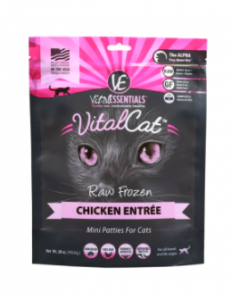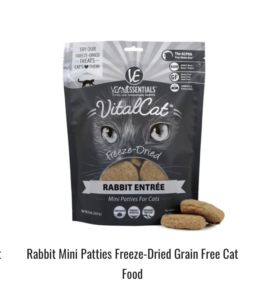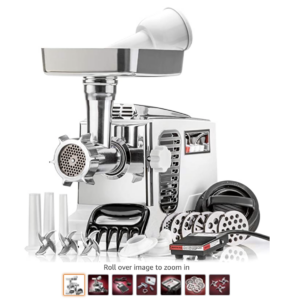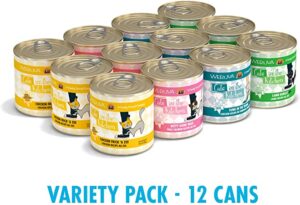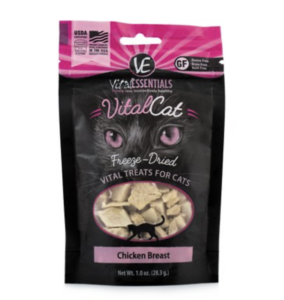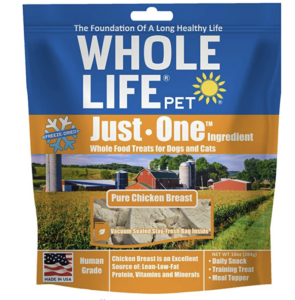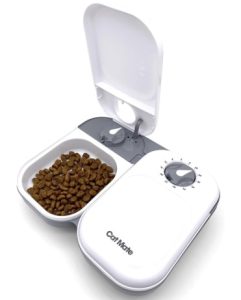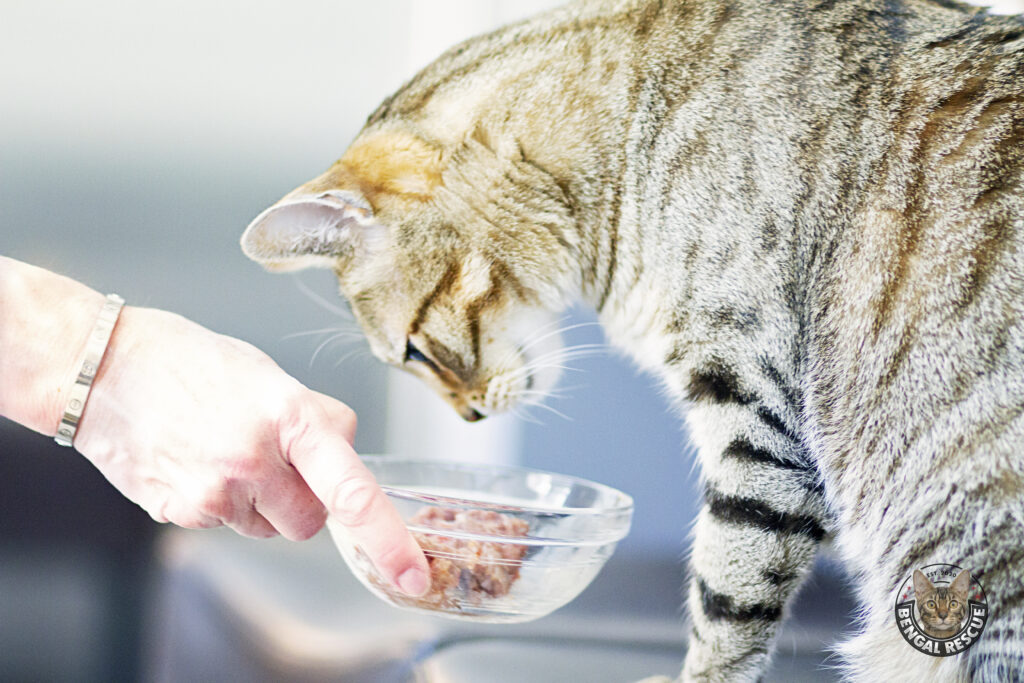
Feeding Your Cat
Feeding your cat is definitely a controversial topic!
Every day, we have food companies flooding us with Advertisements.
We have dry food bags with photos of Bengals on them, reassuring Bengal cat owners that the manufacturer offers the only species-appropriate diet for Bengals.
We have friends who tell us “this is the only thing you should feed your cat.”
We have sick cats who are dying from lymphoma, cancer, diabetes, kidney failure, and other terrible diseases. Our Veterinarians are overwhelmed. We too, are overwhelmed by all the “information” that sends us scrambling in hundreds of directions. It is confusing, expensive, and frustrating.
Because of our experience training and research, we are firm advocates of raw food diets. We always advise our clients “No Dry Food” -ever. For recipes and feeding guidelines, join and follow the Facebook group Completely Raw and Proud.
For more information about why we are not proponents of commercial foods, please read this article Carrageenan Can Be Dangerous to Your Pet.
You should also visit:
It is not difficult to transition a cat from commercial food to Raw food. If you would like to learn more, please read this article How to Transition to a Raw Cat Food Diet.
Raw Food Recommendations
Darwin’s Frozen Raw
One of the easiest (and least expensive) ways to feed your cat raw food, is to subscribe to a raw food delivery service. We like Darwin’s as it is easy, convenient, and contains all of the vitamins and minerals, in each pouch (no messy mixing required.
A typical 10-pound cat would cost approximately $1.70 a day. That is less expensive than all premium wet foods, and it is so much healthier.
Darwin’s has a great new program that offers new Bengal adopters a nice discount on your first order.
Click the link below to be redirected to Darwin’s website for your first discounted order:
Special Offer: Get 10 Pounds For $14.95!
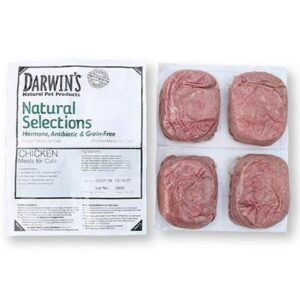
Vital Cat Essentials Frozen Raw
We also love Vital Cat Essentials – specifically the Rabbit formula. Cats in the wild get their protein from a variety of species – so it’s good to replicate that with their diet.
Frozen Raw food (thawed) is the purest food you can choose. It is not heat-fired like Freeze-Dried foods, so it does retain more of the vitamins and minerals that our cats need. You can click on the link to order it for delivery, or it can be found at specialty pet food stores. Most stores will carry a broad range of dog food but not the cat food – they usually have to order the cat version specifically for you.
Vital Cat Essentials Freeze-Dried Raw
If you can’t do Frozen, Vital Cat Freeze-Dried Raw patties are a nice option. is only available at specialty food retailers. Call your local boutique and see if they would be willing to order it for you.
Make it At Home
If you want to make raw food at home, you’ll need a good recipe and an industrial grinder. You will also need to purchase all of the various supplements that you will need to include and portion out in each batch.
You can purchase raw Skinless Boneless Chicken Breast, run it through a grinder, and simply mix in the supplements according to the label of My Natural Cat plus Chicken Liver Powder. It’s a nice short cut.
Or if you prefer to look into other recipes, the gold standard is Dr. Lisa Pierson’s Recipe Making Raw Cat Food. You can also visit the Facebook group Completely Raw and Proud where you will find a variety of recipes.
If you choose to go the “make it at home” route – we highly recommend this Grinder.
You can get the STX Turboforce II”Platinum” w/Foot Pedal Heavy Duty Electric Meat Grinder & Sausage Stuffer for $199 on Amazon. Click the image to learn more about this workhorse.
Please read the following article from Dr. Pierson DVM. Dr. Pierson is one of the most highly cited and respected Nutritional Veterinarians in America. She created this briefing so that people like us, can contemplate the best diets possible for our obligate carnivores – our cats.
Wet Food
If you must feed Wet Food, here is a great brand that has a great Variety Pack, so that you can learn what food your Bengal likes best. We love Weruva, Tiki Cat and others.
Read the label! You want a Wet food that does not contain Chicken by-products or carrageenan.
Treats
Vital Cat Essentials makes great natural treats for cats. Their Chicken version is the most popular.
We also recommend Whole Life pet treats.
Food Bowl With Timer
If you work outside of the home but your cat would appreciate a small lunchtime feeding – we absolutely recommend this auto-feeder. It runs on a AA-battery and can be programmed for up to 48 hours. It has an ice block that can keep wet food or raw food cold for approximately 4-6 hours. It’s a great “in a pinch – I have to go to an appointment” solution, if you don’t want your cat to miss a regularly scheduled meal.
Veganism in Cats
One of the saddest “developments” we have seen lately, is Vegan Humans putting their Obligate Carnivore (Cat) on a Vegan Diet! You would not believe the horror stories that we have witnessed, when a cat is deprived of protein / fat / moisture. We have seen cats go into Renal Failure, Kidney Failure and worse (young cats!).
But don’t take our word for it. Read this article that was published in 2013 Kitten Nearly Dies from Vegan Diet.
If you are even slightly tempted to make your cat go Vegan, please read this article There’s No Such Thing as a Vegan Cat
Say No To Dry Food!
In case you missed it, earlier in this article, we are staunchly against feeding ANY brand of dry food to cats. Please read Dr. Pierson’s article below for the complete explanation of why we do not support Dry Feeding.
Feeding Your Cat: Know the Basics of Feline Nutrition

Feeding Your Cat: Know the Basics of Feline Nutrition
Dr. Lisa A Pierson, DVM
Diet is the brick and mortar of health. This paper lays out some often-ignored principles of feline nutrition and explains why cats have a much better chance at optimal health if they are fed a canned food diet instead of dry kibble. Putting a little thought into what you feed your cat(s) can pay big dividends over their lifetime and very possibly help them avoid serious, painful, life-threatening, and costly illnesses.
An increasing number of nutrition-savvy veterinarians are now strongly recommending the feeding of canned food instead of dry kibble. However, many veterinarians are still recommending/condoning the feeding of dry food to cats. Sadly, this species-inappropriate source of food only serves to promote disease in our cats as discussed below.
If your cat is a dry food addict, please see Tips for Transitioning Dry Food Addicts to Canned Food in the sidebar at catinfo.org. All cats can be switched to a water-rich, low-carb diet if their caregivers are very patient and try enough tricks. Again, patience….patience….patience….and do not give up!
Whatʼs wrong with dry kibble – including any ʻprescriptionʼ dry food?
The three key negative issues associated with dry food are:
1) Water content is too low – predisposing your cat to serious and often life-threatening urinary tract diseases including excruciatingly painful, costly, and potentially fatal urethral obstructions
2) Carbohydrate load is too high – predisposing your cat to diabetes, obesity, and possibly intestinal disease
3) Type of protein – too high in plant-based versus animal-based proteins – cats are obligate carnivores and are designed to eat meat, not grains/plants – grains only serve to enhance the profit margin of the pet food company and do not promote the health of your cat.
Other negative issues include:
- bacterial contamination (can lead to vomiting and diarrhea),
- fungal mycotoxins (contained in grains and are extremely toxic),
- insects and their feces (can cause respiratory problems),
- ingredients that often cause allergic reactions, and all dry food is harshly cooked which destroys/alters vital nutrients.
My Cat is Doing Just “Fine” on Dry Food!
I often hear people make the above statement. However consider the following:
- Every living creature is “fine” until outward signs of a disease process are exhibited. That may sound like a very obvious and basic statement but if you think about it……
- Every cat on the Feline Diabetes Message Board was “fine” until their owners started to recognize the signs of diabetes.
- Every cat with a blocked urinary tract was “fine” until they started to strain to urinate and either died from a ruptured bladder or had to be rushed to the hospital for emergency catheterization.
- Every cat with an inflamed bladder (cystitis) was “fine” until they ended up in pain, passing blood in their urine, and missing their litter box – soiling the home through no fault of their own.
- Every cat was ʻfineʼ until the feeding of species-inappropriate, hyperallergenic ingredients caught up with him and he started to show signs of food intolerance/IBD (inflammatory bowel disease).
- Every cat was “fine” until that kidney or bladder stone got big enough to cause clinical signs.
- Every cancer patient was “fine” until their tumor grew large enough or spread far enough so that clinical signs were observed by the patient.
The point is that diseases ‘brew’ long before being noticed by the living being.
This is why the statement “but my cat is healthy/fine on dry food” means very little to me because I believe in preventative nutrition. I donʼt want to end up saying “oops……I guess he is not so fine now!!” when a patient presents to me with a medical problem that could have been avoided if a species-appropriate diet (low-carb canned or balanced homemade food – not dry food) would have been fed to begin with.
Of course, in order to be on board with the ‘preventative nutrition’ argument, a person has to understand the following facts:
- All urinary tract systems are much healthier with an appropriate amount of water flowing through them. Painful, life-threatening, and very expensive-to-treat urinary tract obstructions commonly occur when cats (especially males) are fed dry food. See Opieʼs pictures at catinfo.org (Urinary Tract Diseases) for a good look at the suffering caused by feeding cats water-depleted diets. These obstructions are serious medical emergencies but are extremely uncommon among cats fed canned food – especially if extra water is added to the canned food. Also, cats (males and females) that are fed a water-rich diet of canned food are much less likely to end up with painful cystitis.
- Cats inherently have a low thirst drive and need to consume water *with* their food. A cat’s normal prey is ~70 – 75% water; dry food is only 5-10% water. Contrary to the wishful thinking of cat owners, cats do not make up this deficit at the water bowl. Several studies have shown that cats on canned food consume double the amount of water when compared to cats on dry food when all sources (food and water bowl) are considered.
- Carbohydrates wreak havoc on cats’ blood sugar/insulin balance predisposing them to diabetes and obesity. (See Diabetes and Obesity at catinfo.org.) Dry foods, as well as some canned foods, are high in carbohydrates with some much worse than others. Note that “grain-free” does not mean “low- carb” since potatoes and peas are often used. (See the Protein/Fat/Carb Chart linked in the sidebar at catinfo.org.)
- Cats are strict carnivores which means they are designed to get their protein from meat – not from the high level of grains found in dry food.
- Contrary to a popular myth, dry food exerts no beneficial effect on dental health and has no scientific support for its use in preventing dental disease. Unfortunately, this myth is often perpetuated by veterinarians who have failed to apply critical thought to this issue.
Feeding cats correctly is definitely a ʻpay me now or pay me laterʼ issue. Cat caregivers often state that canned food is too expensive. However, considering the cost to treat the illnesses that arise from feeding dry food, most people re-think this issue after they receive their vet bill.
Consider practicing preventative nutrition before your furry buddy ends up in a diseased state that could have been prevented with proper nutrition.
If you would like to read more about optimal feline nutrition, please visit catinfo.org where you will find this article in its entirety, as well as other writings on feline care including litter box issues and making cat food.
Dr. Lisa A. Pierson
catinfo.org
January 2013
Product Descriptions
Bengal Rescue attempts to be as accurate as possible. However, Bengal Rescue does not warrant that product descriptions or other content on the Site is accurate, complete, reliable, current or error-free. If a product recommended by Bengal Rescue is not as described, your sole remedy is to return the product to the manufacturer.
© Bengal Rescue 2025
